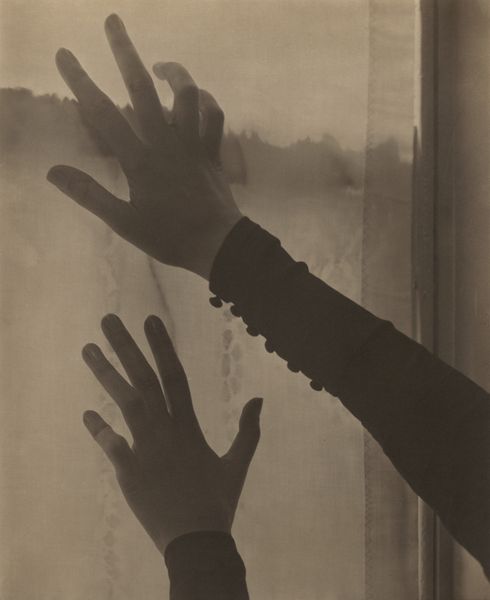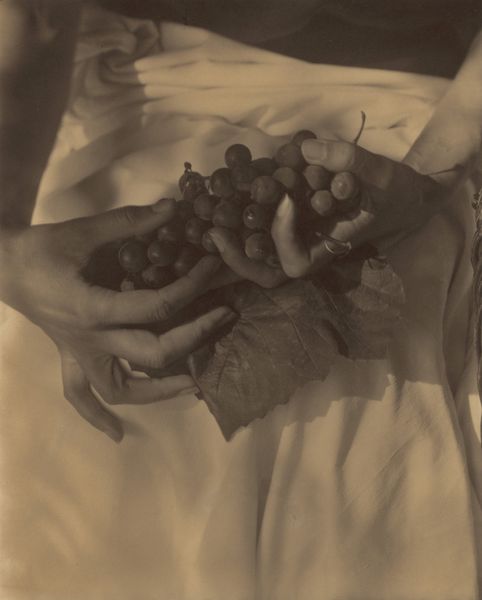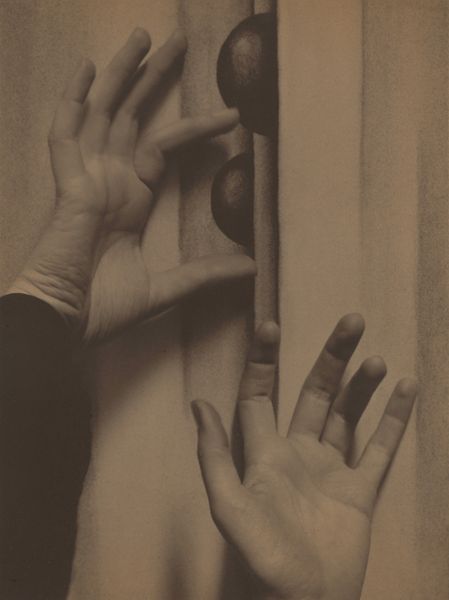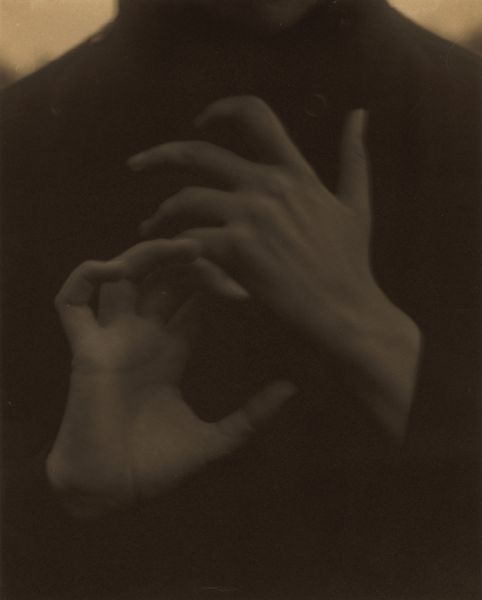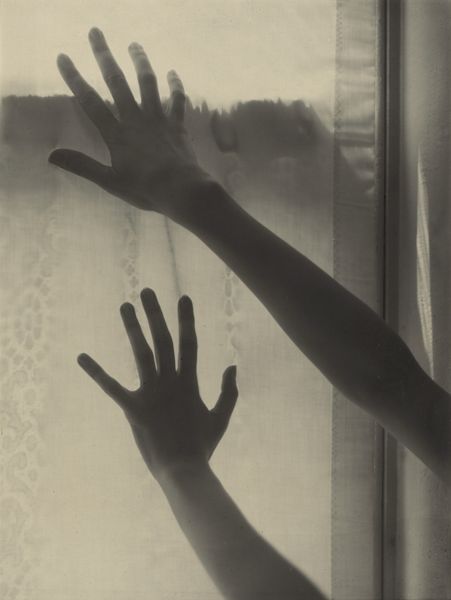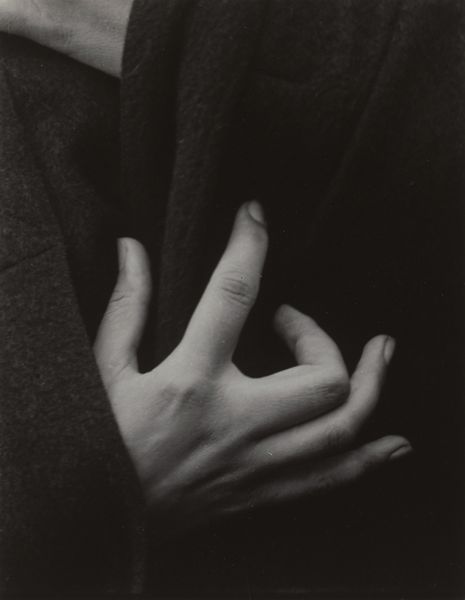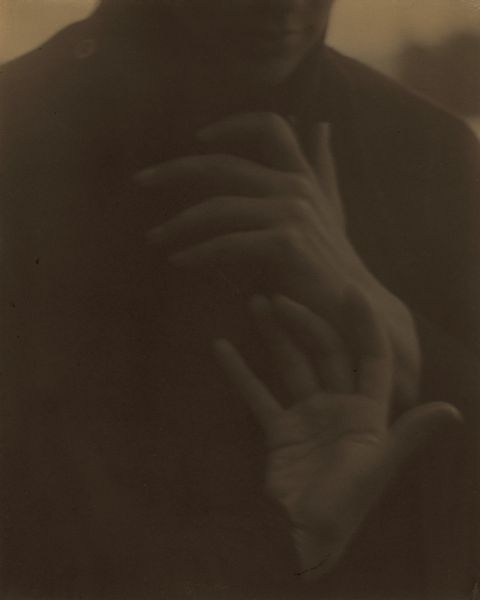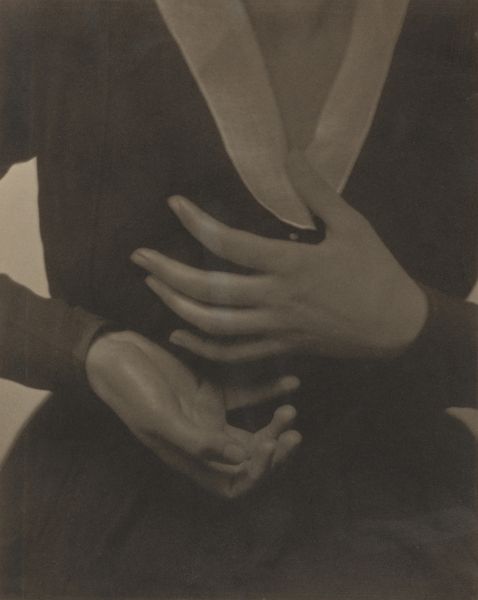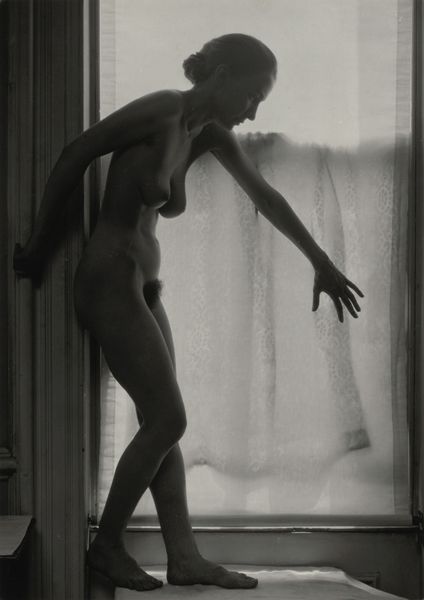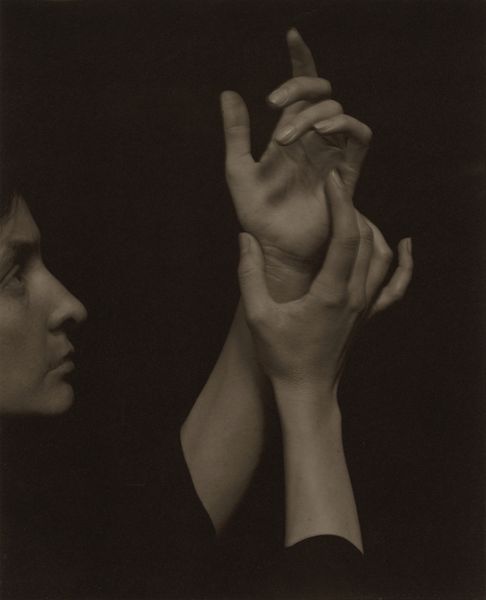
Dimensions: sheet (trimmed to image): 23 × 18.1 cm (9 1/16 × 7 1/8 in.) mount: 50 × 37.6 cm (19 11/16 × 14 13/16 in.)
Copyright: National Gallery of Art: CC0 1.0
Curator: Before us, we have "Hands and Grapes," a gelatin-silver print by Alfred Stieglitz, made in 1921. Editor: It's striking. The composition is simple yet powerful—the way the hands cradle the grapes against that bright background… there's something very intimate about it. Curator: Intimacy is key, given the close relationship between Stieglitz and Georgia O’Keeffe, whose hands these are. The photographic process itself, using gelatin silver, allowed for a crisp tonal range that heightens the tactile quality of the grapes and skin. It was a technique easily reproduced and readily available for most practitioners at the time. Editor: Precisely, and I think that tactility underscores the image’s formalism. Look at the contrast: the light coming through what appears to be a window versus the shadows defining the fingers and the fruit. The almost geometric arrangement of the grapes in contrast with the delicate arch of O'Keeffe’s fingers…it’s quite deliberate. Curator: Indeed. These weren’t isolated subjects for Stieglitz, hands or fruit, and we should look to his motivations and labor for depicting O’Keefe in this light. The photographic lens flattens these spheres of grapes to render the subject more graphic and perhaps suitable to magazine printing technologies of the time. The hands tell of repetitive domestic labor. The dark grapes signal fertility, femininity, and potentially sexuality when viewers knew it was O’Keefe. Editor: It’s fascinating how that material reading intersects with formal considerations. The strong vertical lines of the window frame add a compositional stability, almost a sense of enclosure. The tonal gradients, too, contribute—from the almost pure white of the window to the dense, almost black shadows within the grape cluster. Stieglitz coaxes our eye to follow shape and light that is at once evocative. Curator: And it’s precisely that "evocative" quality which situates the photograph in its socio-cultural context, revealing the means of producing images and representing women at the dawn of the 20th century. It’s not simply about aesthetic appeal, but how the image functions within power dynamics between maker, subject, and viewer. The making of "art," in this case photography, reinforces or undermines these hierarchical structures depending on their intent. Editor: I see your point, especially on how those external societal structures imprint themselves upon the formal reading. It really does compel one to consider beyond the surface, doesn’t it? Curator: Exactly. By focusing on the act of making and modes of production, Stieglitz, we reveal the art world and artistic intent. Editor: Yes. A layered narrative, definitely enriched by examining both the construction and the context.
Comments
No comments
Be the first to comment and join the conversation on the ultimate creative platform.
